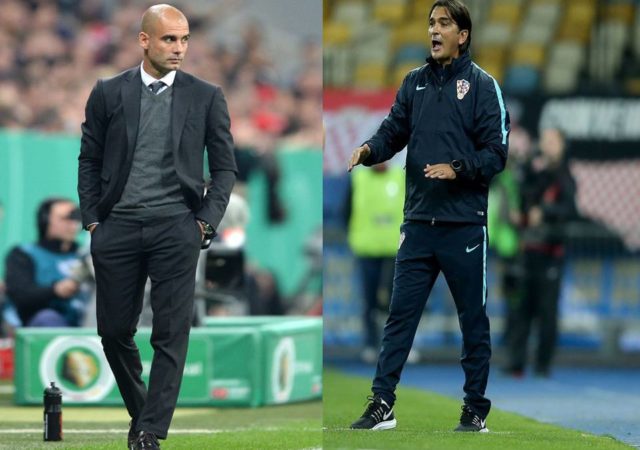
We live in a time of strong visual culture imposed on us by social networks. Thanks to them we are increasingly watching but reading less and less. New trends have not bypassed the new generation of coaches and players. Today, it is impossible for coaches to make a career without worrying about their visual image.
Whether you like it or not, fans and the public do not have the opportunity to personally meet coaches and get to know them, so they evaluate them on the base of their looks. The vast majority of football events followers do not evaluate coaches according to their knowledge and results of their work but by their looks.
Coaches, with their looks and style of dressing during the match, are drawing attention to themselves and sending specific messages. By paying attention to how coaches are dressed during the match, I noticed that most of them hold to the unspoken rule – a suit for the match and a tracksuit for a training.
The Croatian National Team manager Zlatko Dalić sticks also to this unspoken rule. Therefore I was surprised when he wore a tracksuit during the World Cup key qualifying match against Ukraine. He explained to me he changed his dressing style as he wanted to homogenize the team. By wearing a tracksuit he wanted to send a message to the players that he is, despite being a team manager, just one of them.
The coach of current Italian champion Napoli, Maurizio Sarri is also attached to the tracksuit, an indispensable clothing item. When the Italian journalists asked him why, unlike most coaches in Serie A, he was wearing only a tracksuit, he replied: “I will continue to wear a tracksuit on the bench; if the president asks me to wear a suit for an interview, I will do that. But on the bench, I can only wear a tracksuit. “
Coaches wearing suits in comparison to those who wear work uniforms are coaches who emphasize their authority and leadership. But they are also sending the message to the public about their respect for the game and opponents.
Certainly, some of the messages sent by coaches can be read out of clothing and styling. What is important is whether the messages they send are in line with what they really are, or they send ambiguous or contradictory messages, not being even aware of it.
Albert Mehrabian, a renowned sociolinguist, found in his study that in the face-to-face encounter, 55% of the message you want to convey depends on your appearance and body language.The look of each coach is made of a lot of details: hairstyle, movement and hand talk, handiness, cleanliness, style of handshaking, whether you have a tattoo or piercing, a dress style …
The coach’s look is a finalized product by the time when he leaves his home and sets off to a training, match or social event.
It’s time for me to answer the initial question: a tracksuit or suit? It doesn’t matter whether you are wearing a tracksuit or suit, as long as you are always clean and tidy.
Certain coaches pay close attention to dressing, with an aim to develop a specific style. Believe me, it is not by chance that we remember some stylistic details, such as the vest that wears Guardiola, Mourinho’s scarf, Jurgen Klopp’s glasses. All these are carefully selected stylistic figures designed to create recognizability.
People believe because of your looks, not your words, right?


